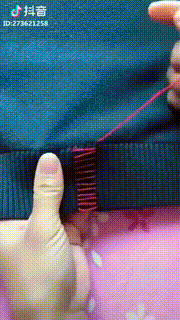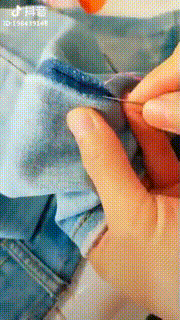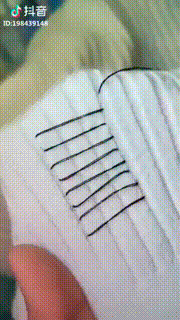The Middle Rodentocene: 10 Million Years Post-establishment
The Middle Rodentocene: 10 million years post-establishment

Retro Rodents: The Furbils and Duskmice
By 10 million years PE the hamsters have diverged into many different forms, such as ungulate-like runners, mustelid-like predators or macropod-like hoppers. But while some of the resident rodents have further specialized away from the basic rodent body plan, two lineages, the furbils (family Caudatocricetidae) and the duskmice (family Cricetomuridae) are notable in having retained fairly conservative rodent anatomy, and are all the more successful for it: these two unassuming lineages have attained a diversity rivalling that of the jerryboas, and fill nondescript mouse, rat, hamster or gerbil niches all across the world.
The furbils, the more derived of the two lineages, are highly social creatures with long, tufted tails, displaying a very marked sexual dimorphism in many species, with dull, drab females and extravagantly-adorned males sporting striking markings and decorative tufts and manes of fur, which are used for display and attracting mates. Furbils tend to live in harems of several breeding females and one dominant male, while younger males are typically solitary and roam about searching for an opportunity to breed with any receptive females. Furbils are omnivores, feeding on insects, invertebrates, seeds, nuts and fruit, and males are known to attain their brilliant colors from pigments in their food: their colorful fur serving as an honest advertisement to their good health.
Male furbils are highly territorial, with the most brightly-colored and brilliantly-patterned males being the ones most attractive to females. This same coloration makes them more conspicuous to predators, as an unfortunate side effect: however, the fact that it gets them a higher chance to breed nonetheless allows them to more effectively spread their genes at the cost of individual longevity-- and in addition, essentially shows off their fitness by advertising an intentional handicap: a male that survives to breeding age even with such visible colors must be a very fit individual indeed, as far as females are concerned.

The most distinctive furbil characteristic of all is their long tail, which depending on the species serves a wide array of functions: for display, social signaling, or balance. One lineage of furbils, however, the subfamily Caudotomae, have a different, more drastic use of their tails: as a defensive measure used to divert predator attacks.
The Caudatomae are unusual among their furbil kin as they are solitary and come together only to mate, and as such lack the marked sexual dimorphism of their cousins. They have instead opted their tail into a lure, with the tuft at the end serving to draw predator attacks away from their body and head. Usually this is only meant to distract the predator and allow the furbil to escape: however, should the tail be caught, the furbil can actually detach it completely and flee from danger, as a special joint at the tail's base allows it to break off with little injury when sufficient force is applied. Unlike lizards who use a similar tactic, however, the tail-dropping is a one-time trick in the animal's whole lifetime, as it does not regrow once shed-- as such, it is a costly sacrifice that is only used as a last resort if no other means of escape is possible.
One very peculiar species, however, has compensated with the lack of mammalian regeneration with a downright absurd adaptation: multiple fracture points along the length of its tail. Known as the fuse-tailed dynamouse (Fragmacaudamys cabuum), it can fracture off its tail a maximum of up to three times, as its tail is comprised almost entirely of three very long and stiff vertebrae. Its reddish fur camouflages it well in Beta-twilight, the time when it is most active, but a conspicuous yellow tuft on the end of its tail serves as a predator distraction tool. If the tail breaks off at a joint the tail quickly heals the end of the stump and a new tuft of yellow hair soon grows around the injury, restoring the form and function to a now-shorter tail. Once a dynamouse has broken its tail three times, the tuft forms directly at the base of its rump, and while no longer to shed any more segments, can still serve as a distraction by making predators attack the wrong end and still giving the now-truncated dynamouse a fair chance to flee.

Just as strange and diverse as the furbils are the even more basal duskmice, small, stocky short-tailed rodents that still very closely resemble their hamster ancestors. Duskmice are a diverse group numbering nearly a hundred species, most of which are nondescript mouse-like seed eaters that hoard food in burrows and emerge at night and sometimes at Beta-twilight to forage, avoiding the many diurnal predators active during the day.
Some duskmice, however, have taken off to unusual niches, to take advantage of food sources beyond the reach of other hamsters. One genus, the molemice (Subterramys spp.) have adapted into specialized burrowers, developing large clawed forepaws for shoveling away dirt and hairless flat noses to push loose soil aside. They tunnel underground in search for roots, tubers and worms, and rarely ever come to the surface unless disturbed or if their burrows are flooded by heavy rains.
Another duskmouse lineage, the pondrats (Aquacricetus spp.), have instead taken to the water to feed on aquatic invertebrates and water plants that occur in abundance in freshwater bodies such as lakes and streams. They are the first hamsters on HP-02017 to specialize to a water-dwelling lifestyle, and as such have utilized a very unusual part of their anatomy to thrive in wet habitats: their cheek pouches. Acting as both flotation device and air storage, they can contract specialized muscles in their cheeks to compress the air, allowing them to sink and dive, and when returning to the surface quickly reinflate their cheek pouches to rise quickly to the top. Due to this specialization the cheeks can no longer be used as a food storage, and the pondrats instead hold food in a new different set of pouches that open lower in their mouths, surfacing every now and then to feed on their haul while floating at the surface.
▪▪▪▪▪▪▪▪
And thus with the duskmice ends the list of diversity in the Middle Rodentocene, the peak of speciation in a world of the small and scurrying. Our next stop will be at the Late Rodentocene, 20 million years PE: a time of even more diversity, but one that heralds the end of an age-- and a new promise of even greater things to come.
▪▪▪▪▪▪▪
More Posts from Enbylvania65000 and Others






the long tailed silky-flycatcher is a thrush-sized passerine bird found only in the mountains of costa rica and western panama. females are duller in coloration than males and lack the signature long tail feathers. this species primarily feeds on insects, as their name suggests, but also takes fruit, with a preference for mistletoe. these birds lay only two eggs in a clutch, which are placed in a delicate nest made of lichen.
The Early Therocene: 30 million years post-establishment

Where The Buffalomys Roam: The Mison
The largest land animals of the Early Therocene are the giant, herbivorous descendants of the cavybaras, known as the mison. One of the most successful megafaunal herbivores of this age, they are represented by several dozen species in five genera, and are found in various biomes of the continents of Nodera, Westerna and Ecatoria.
The mison first emerged at the end of the Late Rodentocene, having evolved from the still-extant alpine cavybaras (Pilosocricetus spp.) native to the continent of Westerna. A lowering of the sea levels during a short period of glaciation at the end of the Rodentocene exposed land bridges from the shallow seas and allowed the mison to migrate west to Nodera and south to Ecatoria, where they became isolated once the sea levels rose and eventually evolved into different species.
Today, the mison are among the most abundant grazers throughout the plains across all three continents, and also the biggest. Weighing up to two thousand pounds and standing six feet as the shoulder, they are the biggest hamsters of this age, far outclassing their cavybara ancestors and rivalling the biggest rodent ever to live on Earth, the prehistoric giant pacarana, Josephoartegesia monesi. Their enormous size leaves them nigh-invulnerable to predators once they are fully grown, by sheer virtue of being so big.
The bearded mison of Westerna (Bovitauromys spp.) is the most basal genus, native to the cold plateaus of the Westernan continent where the mison first originated. Their Noderan cousins, the plains mison (Buffalomys spp.) and the savannah mison (Bisonomimus spp.) are adapted to warmer climates, with the plains mison being a resident of relatively warmer temperate plains, and the savannah mison being far less shaggy than its cold-clime relatives, as well as sporting a distinctly shorter and blockier head, as an adaptation for stronger jaw muscles to masticate the tough succulents of the dry semidesert.

In the southern continent of Ecatoria, however, live a distinct lineage of mison, which sport an unusual adaptation: a pair of tusks. All mison species possess molars that, much like their incisors, have evolved to grow constantly, allowing them to cope with the constant wear and tear of grinding tough woody vegetation. This branch of the mison family tree, however, modified their first upper molars into a pair of prominent protruding tusks, as while their sheer size was protection enough from fearret predators in Nodera and Westerna, in the continent of Ecatoria the mison had a different, endemic carnivore to worry about: the hamyenas.
The steppe tusked mison (Ceratodontomys spp.) sport small straight tusks, which serve to dig up ground plants and defend themselves from predatory hamyenas with jabbing thrusts of their massive heads. The southern tusked mison (Megaloceratodon spp.), on the other hand sport enormous, curving tusks, which it uses to sweep aside snow, fend off predators, and compete with other males- while both sexes sport tusks, they are markedly bigger in the males, which they use to joust with rivals over territory and mates.
All species of mison are grazers, specializing to feed on low-growing vegetation such as grasses, bushes and shrubs. Their immense sizes and tendency to travel in large herds numbering in the hundreds make them important ecosystem engineers, grazing through tough, thorny vegetation and promoting the growth of other plants that other herbivores, such as boingos and hamtelopes, rely on for food.
▪▪▪▪▪▪▪▪▪



The “Necromancy is evil“ we see in most fantasy worlds stems from a christian view of having to honor the body after death in a certain way to ensure the soul’s safety in the afterlife. And while I encourage you to explore societies that don’t see necromancy as evil, I also encourage you to explore societies that see necromancy as evil for different reasons.
Drow might believe that after death, your body belongs to Lolth and must be fed to spiders. Reanimating a body means stealing from Lolth and must therefore be punished.
A Zoroastrian inspired society might believe that with death, evil starts infesting the body, so dead bodies must be kept away from the community, and reanimating them keeps them in the community and is therefore bad.




after the huge amazing response I got from my ace!Jiang Cheng comic - all of the ace people saying how amazing it felt to be acknowledged, and all of the people who came to me saying that they hadn’t realised they were ace until they read the comic - I decided I wanted to make something for ace awareness week. it’s not quite as pretty or feelsy as the other comic, but there are so many people even within the LGBT+ community who just… genuinely do not understand asexuality, I figured even something basic would help :)
happy ace awareness week! please remember: everyone’s experience with sexuality is different! be kind and support each other!
“asexuality is just the lack of a sex drive, or a really low one” uuhhh no. really, no. that is incorrect, you have been lied to, i’m sorry.
asexuality is the lack of sexual attraction to anyone. sex drive is your horny meter. you can still be horny and not be sexually attracted to people! similarly you can be sexually attracted to people and not be horny!! amaze



The reduction gears and steam turbines under construction at the General Electric Plant, circa March 1942.

There are four sets of double reduction cross-compound geared turbines, with each turbine set driving a single shaft. “They offered almost 10-1 reduction to allow the turbines to run at much higher and more efficient rpm. These are some of the most critical components of the powerplant and one of the things which allowed long ranges in US battleships.“



Due to the date and the fact USS Iowa (BB-61) and USS Missouri (BB-63) were the only Iowa Class Battleships to receive General Electric gears and turbines, these are most likely for USS Missouri.


A man is shown deburring the edges of teeth with a file.
Note that they are double helix which eliminates axial thrust while providing the quieter running and increased strength of helically cut gears.
Photographed by Dmitri Kessel of LIFE Magazine. Identify by Peter Deforest.
LIFE Magazine Archive: 121941, 121944, 121942, 121943, 121940, 121945, 121946, 121949
-
 nolimitjayski24 liked this · 1 month ago
nolimitjayski24 liked this · 1 month ago -
 arcasvethix liked this · 4 months ago
arcasvethix liked this · 4 months ago -
 keresacheron liked this · 8 months ago
keresacheron liked this · 8 months ago -
 el-recaptas liked this · 8 months ago
el-recaptas liked this · 8 months ago -
 theenderreddit liked this · 9 months ago
theenderreddit liked this · 9 months ago -
 nikkismalls liked this · 1 year ago
nikkismalls liked this · 1 year ago -
 thereadingmonarch liked this · 1 year ago
thereadingmonarch liked this · 1 year ago -
 jcknil liked this · 1 year ago
jcknil liked this · 1 year ago -
 monster-creator-12 liked this · 1 year ago
monster-creator-12 liked this · 1 year ago -
 aotheovergod liked this · 1 year ago
aotheovergod liked this · 1 year ago -
 eldritch-orange liked this · 2 years ago
eldritch-orange liked this · 2 years ago -
 rodent178 liked this · 2 years ago
rodent178 liked this · 2 years ago -
 darkwingphoenix liked this · 2 years ago
darkwingphoenix liked this · 2 years ago -
 herobrinna reblogged this · 2 years ago
herobrinna reblogged this · 2 years ago -
 herobrinna liked this · 2 years ago
herobrinna liked this · 2 years ago -
 jarrax355 liked this · 2 years ago
jarrax355 liked this · 2 years ago -
 trashysaur1125 liked this · 2 years ago
trashysaur1125 liked this · 2 years ago -
 ruby-seadragon liked this · 2 years ago
ruby-seadragon liked this · 2 years ago -
 i-do-unimportant-things liked this · 2 years ago
i-do-unimportant-things liked this · 2 years ago -
 manoszilla399 liked this · 2 years ago
manoszilla399 liked this · 2 years ago -
 wildfireratz liked this · 2 years ago
wildfireratz liked this · 2 years ago -
 aem9phase liked this · 3 years ago
aem9phase liked this · 3 years ago -
 smb62 liked this · 3 years ago
smb62 liked this · 3 years ago -
 crowjack20 liked this · 3 years ago
crowjack20 liked this · 3 years ago -
 galojou liked this · 3 years ago
galojou liked this · 3 years ago -
 canine-cosmonaut liked this · 3 years ago
canine-cosmonaut liked this · 3 years ago -
 tundragravedigger liked this · 3 years ago
tundragravedigger liked this · 3 years ago -
 capnportofficial liked this · 3 years ago
capnportofficial liked this · 3 years ago -
 kenzietensei liked this · 3 years ago
kenzietensei liked this · 3 years ago -
 kobold-king liked this · 3 years ago
kobold-king liked this · 3 years ago -
 whimsicalsong liked this · 3 years ago
whimsicalsong liked this · 3 years ago -
 bestia-02 liked this · 3 years ago
bestia-02 liked this · 3 years ago -
 ajaajka liked this · 3 years ago
ajaajka liked this · 3 years ago -
 cdbeetle43 liked this · 4 years ago
cdbeetle43 liked this · 4 years ago -
 thoughts-are-complicated liked this · 4 years ago
thoughts-are-complicated liked this · 4 years ago -
 cannotfindagoodusername liked this · 4 years ago
cannotfindagoodusername liked this · 4 years ago -
 jojogigi liked this · 4 years ago
jojogigi liked this · 4 years ago -
 itg15 liked this · 4 years ago
itg15 liked this · 4 years ago -
 san12313 liked this · 4 years ago
san12313 liked this · 4 years ago -
 discovoyblends liked this · 4 years ago
discovoyblends liked this · 4 years ago -
 a-peculiar-potoo reblogged this · 4 years ago
a-peculiar-potoo reblogged this · 4 years ago -
 a-peculiar-potoo liked this · 4 years ago
a-peculiar-potoo liked this · 4 years ago -
 thebamboozlerblr-blog liked this · 4 years ago
thebamboozlerblr-blog liked this · 4 years ago -
 enbylvania65000 liked this · 4 years ago
enbylvania65000 liked this · 4 years ago -
 enbylvania65000 reblogged this · 4 years ago
enbylvania65000 reblogged this · 4 years ago -
 creaturedeityendless liked this · 4 years ago
creaturedeityendless liked this · 4 years ago -
 unidentifiablelifeform liked this · 4 years ago
unidentifiablelifeform liked this · 4 years ago
